Having a blocked toilet can be quite concerning initially. Don't worry! Repairing it is simpler than you might imagine. This manual will demonstrate how you can unclog it on your own and save money by not needing to hire a professional. With some elbow grease and everyday household items, at your disposal you'll have everything up and running smoothly in no time. You'll discover techniques using tools like a plunger, even utilizing baking soda. These suggestions from HOROW, a known toilet brand easily turn a plumbing issue into a task, with minimal hassle.
The Common Causes of Toilet Clogs
Knowing why toilets clog is key to fixing them. Each cause can really affect how a toilet works.
Too Much Toilet Paper
Using amounts of toilet paper can quickly lead to a toilet getting clogged requiring techniques, for unclogging it and restoring proper functionality to the toilet once more.
Foreign Objects: Wipes, Sanitary Products, or Toys
It's crucial to avoid flushing items , such as wipes and sanitary products down the toilet since they do not disintegrate like toilet paper does. This can result in challenging to resolve toilet blockages.

Low-Flow Toilet Issues
Low flow toilets are designed to conserve water. They may encounter flushing problems that could result in blockages necessitating specialized techniques, for clearing the clog.
Hard Water Buildup
Water with mineral content, can lead to the accumulation of minerals in plumbing systems resulting in narrowed pipes that are prone to blockages over time. It emphasizes the importance of regular maintenance, in areas affected by hard water conditions.
Various ways to unclog a toilet
Use a Plumbing Snake
Having issues, with a clog, in your toilets pipes? You, might want to try fixing this issue by using a plumbing snake or a toilet auger. These devices are quite useful, for solving issues by unclogging pipes.
What is a Plumbing Snake?
When a plunger doesn't cut it for your toilet troubles at home and you need something to tackle intricate plumbing issues specifically in the toilet area—enter the plumbing snake or toilet auger! With its coiled design that allows for maneuverability and effectiveness when plungers fall short in solving the problem.
When to Use a Snake: For Deeper or Stubborn Clogs
Sometimes, a plunger won’t cut it. That's when a toilet auger is used. It goes deeper than plungers, aiming for hard-to-reach clogs.
How to Use a Plumbing Snake
Using a plumbing snake takes some patience and care:
- Put the snake’s head into the toilet, avoiding scratches to the porcelain.
- Gently turn the handle, guiding it through the pipe’s bends.
- When it hits a block, twist the snake to break or catch the clog.
- Slowly pull it out to remove the debris. Repeat if needed to fully clear the clog.
Here is the diagram clearly depicts each step in the process, from inserting the snake's head into the toilet to twisting and removing it to clear a blockage.

Clearing a clog might need several tries to get the toilet running smoothly.
Handling a plumbing snake is easy and it’s effective for serious clogs. For clearing toilet drains or handling a severe blockage, a plumbing snake is the go-to tool.
Try Dish Soap and Hot Water
Sometimes, the simplest solutions work best for unclogging toilets. Using common items like dish soap and hot water can help. The soap's surfactant properties tackle minor blockages effectively.
The Chemistry of Soap on Clogs
The formulation of soap is specifically crafted to dissolve fats and oils which makes it ideal, for addressing stubborn greasy blockages in drains and pipes.When the soap comes into contact, with these substances it works to disintegrate the elements that bind the clog together result in loosening up the materials within your plumbing system.
Proper Application of Soap for Maximum Effectiveness
For a fix, to your toilet issue; squirt a generous amount of dish soap into the bowl first and foremost! Next step: Pour hot water from waist level to create some pressure, within the pipes without causing any damage; remember not to use boiling water for this task!
Allow the mixture to settle for a moments to address the blockage before attempting to flush it out.You'll often find that this simple step resolves the issue without requiring action or intervention.
Baking Soda and Vinegar Solutions
When it comes to tackling toilet drain blockages using a combination of baking soda and vinegar is a choice. This method effectively clears clogs in toilets while being environmentally friendly making it a preferable alternative, to chemical products.
Step-by-Step Process
Using this toilet unclogging tip is easy with just basic kitchen items. Follow these steps to clear your toilet's drain with baking soda and vinegar.
- Step 1:Pour one cup of baking soda directly into the toilet bowl.
- Step 2:Let the baking soda sit at the bottom for a few minutes.
- Step 3:Slowly add two cups of vinegar, taking care to pour it gently.
- Step 4:Wait for at least 30 minutes after it fizzes, so it works on the clog.
- Step 5:For tough clogs, you might leave it overnight before flushing.
- Step 6:Flush to see if the clog is gone. Do it again if needed.

For hard blockages, doing it more than once can be more effective. It may break down tough clogs without calling a pro.
Enzyme-Based Drain Cleaners
An increasing amount of homeowners nowadays opt for enzyme based drain cleaners to clear toilet clogs due, to their rising popularity for breaking down waste through enzymes that transform waste into water and carbon dioxide.They provide an eco friendly option, for unclogging while being considerate of both the environment and your plumbing system.
The Benefits of Enzymatic Cleaners
Using cleaners for toilets is beneficial, for both nature and your plumbing system since they do not cause pipe corrosion like strong chemicals do; in addition to this advantage is the prevention of blockages, for approximately a month post application of the cleaner product—ensuring clear pipes without any detrimental effects.
How to Apply Bio-Cleaners in Toilet Clogs
When using a cleaning product, in the toilet bowl; pour the recommended quantity and allow it to sit for several hours before flushing it away; this gives time for the enzymes to effectively break down any blockages present.
Use a Wet/Dry Vacuum for Toilet Unclogging
In situations where a basic plunger falls short in clearing toilet clogs to tackle the toughest blockages effectively and efficiently experts suggest turning to a wet/dry vacuum for a reliable solution that gets the job done.
Here's the step-by-step process of using a Wet/Dry Vacuum for toilet unclogging presented in a table format:
|
Step |
Action |
Description |
|
1 |
Prepare the Vacuum |
Ensure the vacuum is set for liquids. Remove the filter and bag to avoid water damage. |
|
2 |
Seal the Vacuum Hose |
Fit the end of the vacuum hose tightly over the toilet drain, using a towel to ensure a tight seal. |
|
3 |
Vacuum the Clog |
Turn on the vacuum to suck up the clog from the drain. Allow it to run a few minutes to effectively pull the clog. |
|
4 |
Check the Results |
Remove the hose and inspect the toilet to see if the clog has been removed. Repeat if necessary. |
|
5 |
Clean Up |
Clean and sanitize the vacuum thoroughly after use, especially if it's used elsewhere around the house. |
Warning Signs that DIY Methods might not be Enough
Starting with do it yourself remedies can be helpful when dealing with a blocked toilet; however certain indicators suggest that professional assistance may be necessary, for fixing the issue and avoiding complications, down the line. It's important to be aware of these signs to address the situation.
Recurring Clogs
Using a plunger or plumbing snake often? It might mean there are deeper issues in your plumbing. Recurring clogs show that quick fixes won't solve the main problem. It's probably time for a better solution.
Water Backing up into Other Drains
Water from the toilet backing up into places like the bathtub is worrisome. It hints at a major blockage in your main sewer line. In this case, simple clogged toilet fixes might not be enough.
Foul Odors Coming from the Toilet
An unpleasant smell from the toilet suggests sewer gases are leaking because of a blockage. This situation calls for urgent help from a professional. Delaying could lead to health issues and complex plumbing troubles.
Time to Call a Plumber
If you've exhausted all your efforts, in unclogging your plumbing without success and the issue persists it may indicate an problem that requires professional intervention beyond your capabilities.. It is advisable to seek the assistance of a plumber to address any toilet issues effectively..
Repairing a toilet may not be as simple, as employing a plunger or chemicals at times; it could involve problems, with the sewer line or require specific tools that demand the skills of a knowledgeable professional.
Professional Help for Deep Blockages
Plumbers possess the expertise and equipment to identify and resolve issues beyond your capabilities.They are capable of addressing blockages and repairing damage causing the problem.With their assistance your toilets plumbing system will be back, in working order to prevent complications.
Preventive Measures
Ensuring your toilet doesn't get clogged is important. It can save time, and keep your home comfortable. It's advisable to take steps, to prevent blockages , and maintain the smooth functioning, of your plumbing system regularly.
Avoid Flushing Non-Flushable Items
Some things should not be put in the toilet as they can lead to blockages—items, like wipes cotton balls and feminine hygiene products can cause plumbing issues. To prevent toilet clogs it's best to flush down waste and toilet paper.
Use Less Toilet Paper
Using less toilet paper helps prevent clogs. Too much can block, especially in low-flow toilets. Teach everyone at home the right amount to use. This prevents future problems.
Install a High-Pressure Toilet
Toilets with pressure, such as HOROW consume less water yet deliver strong flushing power to prevent clogs effectively and enhance toilet performance.
Regular Maintenance
Checking and fixing your toilet regularly can stop big problems. Address any small issues early. This keeps your toilet working its best. It's key to household toilet clog prevention.
Which Type of Toilet is Easy to Block: Direct Flush vs Siphonic Flush
The direct flush toilet does not have so many twists and turns. Its drainage pipe is very thick, generally 8-10 cm in diameter. Its advantage is that it is not easy to block. Even if you throw paper towels and the like into it, it is easy to flush away, but the disadvantages are also obvious. The smell is easy to come out, and there is no damping structure.
The siphon toilet adopts a U-shaped structure, and you can see that a section of its waterway is facing upward, so the smell in the sewer is not easy to return to the toilet mouth, but the pipe diameter is not so large, about 5-6 cm in diameter. The cross-sectional area is only about one-third of the straight type, so a siphon toilet is easier to block.

Effective ways to Unclog HOROW Toilet
The finest toilets may experience clogs from time to time too! HOROW toilets are known for their effectiveness and practicality; however they are not immune to problems arising.Specifically when dealing with flushes,dual flushes or wall hung models it is crucial to be knowledgeable about the appropriate methods.This will help you save time and avoid any harm.In this guide we will discuss ways to clean and unclog drains, in HOROW toilets.
Unclogging HOROW Single-Flush Toilets
Upgrade to a performance single flush toilet such as the HOROW Comfort Height Elongated Toilet Single Flush 1 Piece Toilet Model ST076W for a clog free experience.The ST076W boasts a trapway design and self cleaning features that simplify upkeep with no tricky corners or grooves to tackle. Ensuring lasting cleanliness, beyond what regular toilets offer.
When dealing with flush HOROW toilets clogs it is recommended to use a plunger designed for toilets specifically. Ensure that the plunger forms a seal around the drain before applying firm and deliberate plunging motions to generate suction and clear the obstruction. This method is usually effective in addressing problems such, as excessive toilet paper buildup.
Unclogging HOROW Dual-Flush Toilets
Dual-flush HOROW toilets, like HOROW 10 Inch Rough Toilet Bowl Elongated One Piece Toilet Model T0338W-10, are good to choose. It has clean lines and skirted trapway for simplified cleaning.
Dual-flush HOROW toilets save water by offering two flush options. It's important to use the right flush to avoid clogs. If a clog does happen, use a plunger with the right amount of force. Don't press both flush buttons at once, as this can make clogs worse.
Unclogging HOROW Wall-Hung Toilets
If you want toilets to be more convenient, you can try HOROW Modern Wall Hung Toilet With Soft Closing Toilet Seat Model TG02W. Experience double swirl flushing with our one-piece wall-hung toilet. The super-strong flushing function ensures a clean bowl with no water leakage or clogging, thanks to the 4" fully-glazed trapway.
Wall-hung toilets have unique design and plumbing. For tough clogs, it's smart to call a professional for HOROW toilet drain cleaning.
Wish you Understand and Fix the Clogging
Learning to unclog a toilet is key to home upkeep, saving you time and cash. You now know how to tackle clogged toilets. You've learned about plumbing snakes, safe mixes of dish soap and hot water, and using baking soda with vinegar. Bio-cleaners offer a chemical-free way to unclog and maintain pipes.
Sometimes, though, DIY solutions won't cut it. If you're often facing clogs or bad smells and back-ups, it's time to call pros. Waiting too long could mean more damage and higher costs. Knowing when to get a plumber is vital.
To stop clogs before they start, follow good toilet care practices. Avoid flushing things that don't belong, use less toilet paper, and think about getting a high-pressure toilet like the HOROW line. A well-kept toilet runs smoothly and keeps your plumbing healthy. With careful maintenance and the right know-how, your toilet will work well for many years.
FAQ
1. What are some easy DIY solutions for unclogging a toilet?
You can unclog a toilet with several DIY methods. Try a plunger or mix dish soap with hot water. You can also use baking soda and vinegar, or a plumbing snake. Enzyme-based cleaners work well for organic clogs too.
2. Why is my toilet getting clogged?
Clogs usually happen from using too much toilet paper. Flushing items like wipes or sanitary products causes problems. Low-flow toilets might not flush strongly. Hard water minerals can build up too.
3. How can I use a wet/dry vacuum to unclog a toilet?
Use a wet/dry vacuum to suck out clogs. Remove the water, seal the vacuum hose over the drain, and turn on the vacuum. Make sure it's meant for wet/dry use and be careful to avoid water damage.
4. How can I prevent toilet clogs?
Avoid flushing non-flushables and limit toilet paper use. Consider a high-pressure toilet for better flushing. Regular maintenance helps catch issues early.
5. What's the best way to unclog a HOROW toilet?
For HOROW toilets, a plunger usually works. Make sure to use the correct flush option for dual-flush models. Follow the manufacturer's advice for wall-hung models and use gentle methods to protect the plumbing.

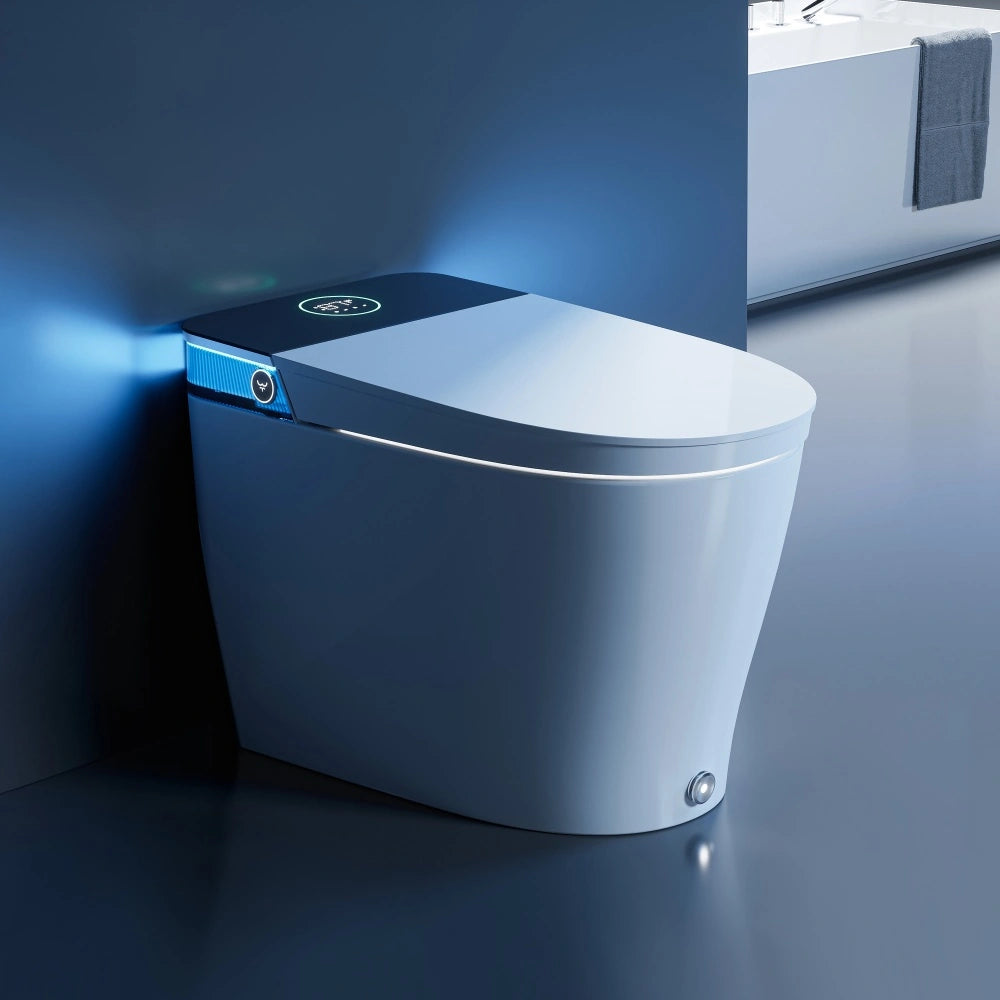
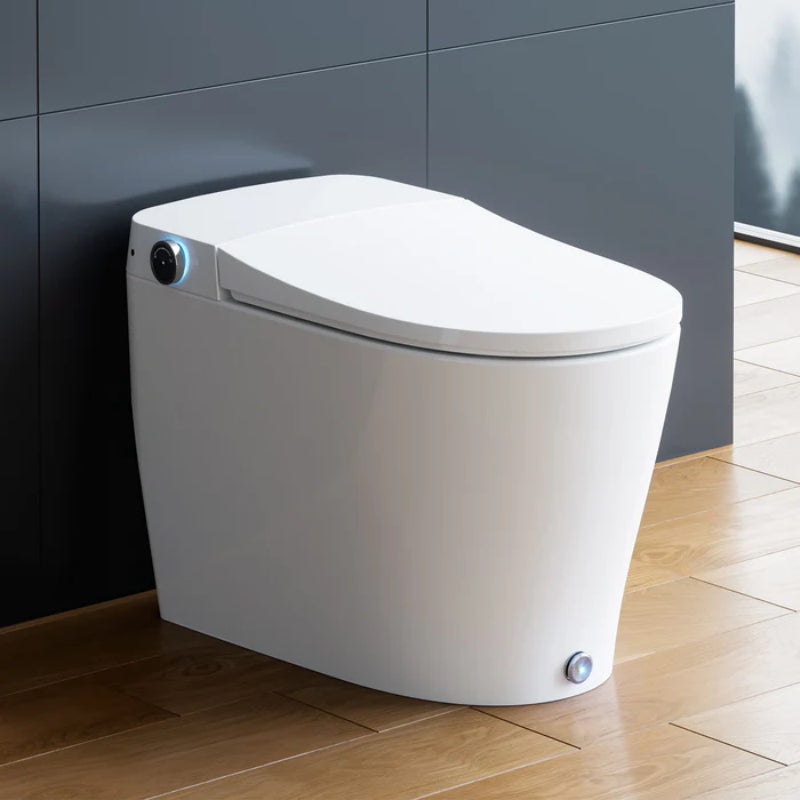
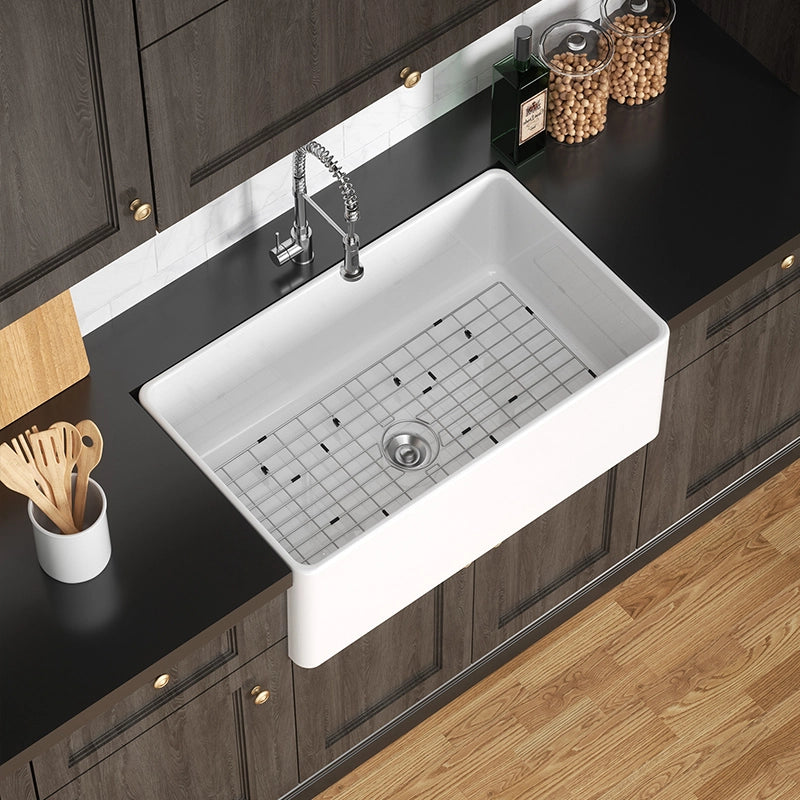
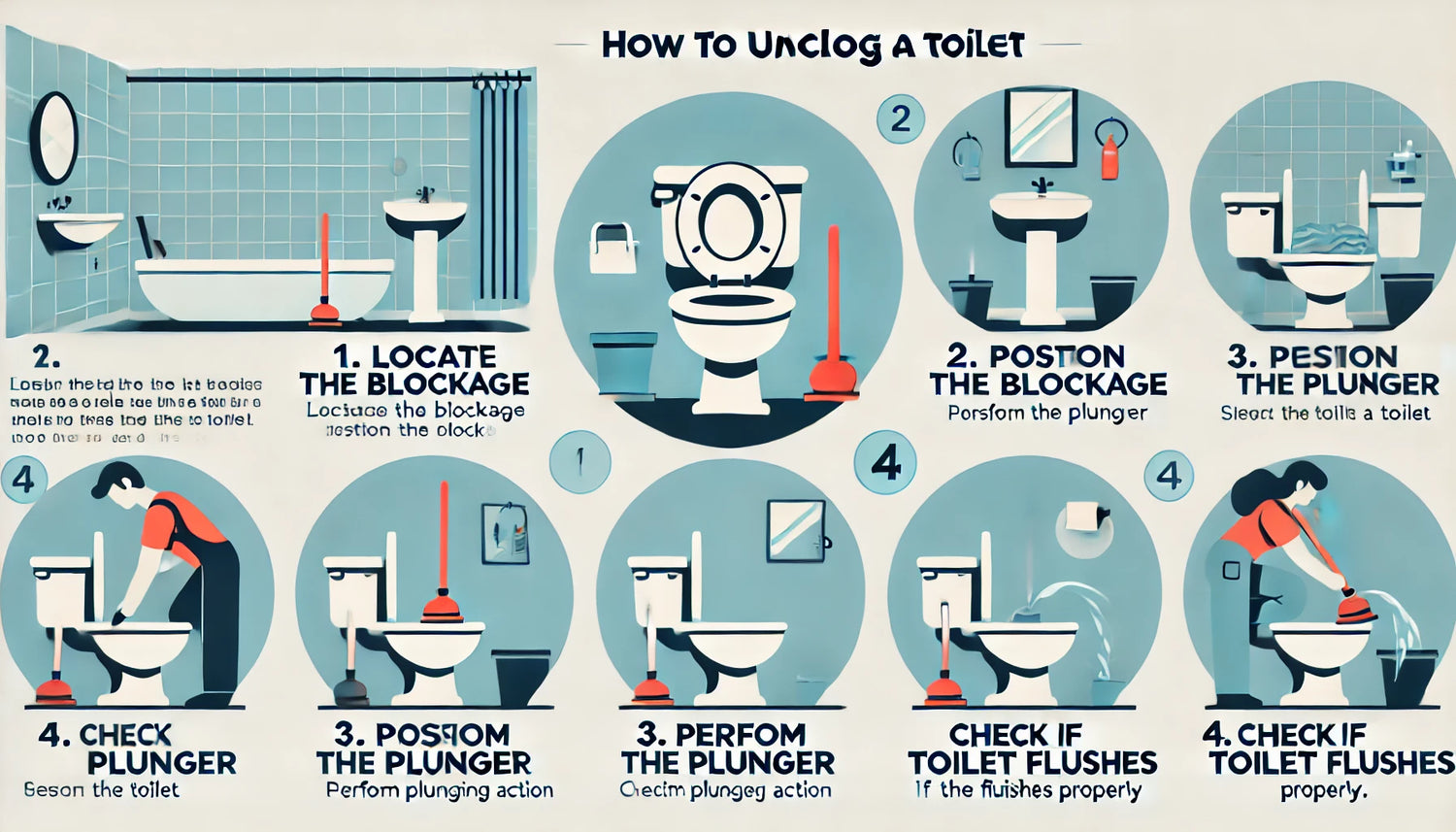

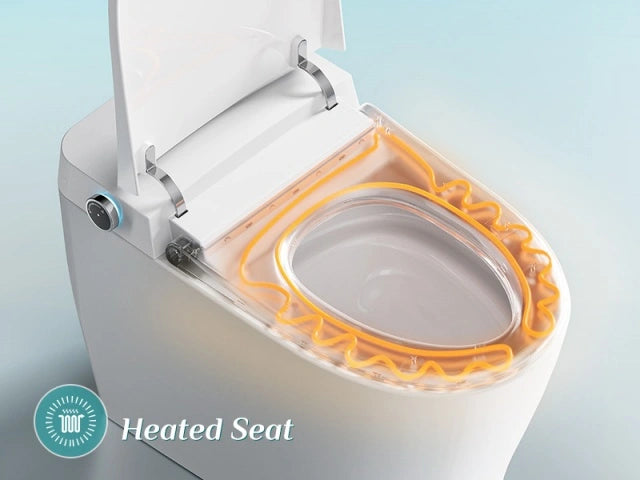

Leave a comment
This site is protected by hCaptcha and the hCaptcha Privacy Policy and Terms of Service apply.